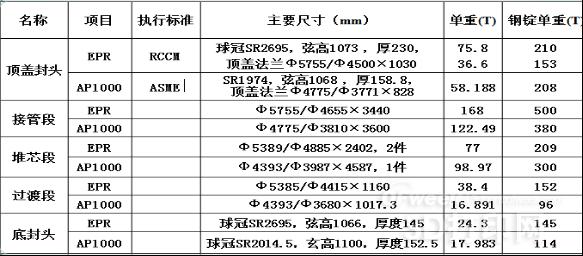Yan Yongnian: Application prospect of cladding-extrusion process in high-end equipment manufacturing
At present, heavy and large high-end structural parts for domestic and foreign heavy equipment, without exception, heavy or super heavy steel ingots obtained from heavy-duty refining and heavy-duty vacuum ingots, through "opening", "pre-forging" and "final forging" Completed, this is the heavy forging process of the last two centuries.
Using a different forming technology than the heavy-duty free forging process - 3D printing metal laser cladding (LC - Laser Cladding / EC - Electron beam Cladding) technology, complete high-quality blanks without segregation, Combined with the modern hot extrusion process, high-temperature and high-pressure closed extrusion is used to obtain high-end heavy-duty and large-sized structural parts. The innovative process of metal laser cladding and billet-hot extrusion final forming is called cladding-extrusion. (CE - Cladding-Extrusion) process.
CE advanced forming technology is a high-end equipment manufacturing process with broad application prospects in the fields of aviation, electric power, high-speed rail, ocean, nuclear power and military.
First, the background introduction
In the 21st century, high-end equipment manufacturing has higher and higher quality requirements for nuclear power, offshore and military high-end structural components such as heavy-duty, large-scale and complex chambers with shells and pipe platforms, and the number of requirements is increasing. Generally, forgings cannot be sold, and high-end forgings are in short supply. Nuclear forgings are particularly serious. It is now the age of "who has nuclear forgings and who has nuclear power plants." The traditional heavy-duty free forging equipment is very surplus in China, but it can not solve the problem of high-end forgings very well. Heavy-duty free forging uses heavy-duty steel ingots as raw materials. In order to improve the internal quality of materials, “separation†is used to eliminate segregation, material and energy waste is large, forging precision is very poor, and manufacturing cycle is long. In the high-end, heavy-duty forming industry, an average of 1.5 to 2 tons of forgings can process 1 ton of parts, while a 1 ton zero forging requires 4 tons of steel ingots, so an average of 6 to 8 tons of steel ingots can process 1 ton of parts. The Westinghouse AP1000 standard nuclear reactor transition section, 17 tons, requires 96 tons of steel ingots, material utilization rate is only 17%. The average utilization rate of ingots for nuclear boiler forgings (508-III steel) is only 20%-25%. The material utilization rate of titanium alloy air-to-air missile warheads and missiles is only 15%. Tables 1 and 2 show that the utilization rate of high-voltage forgings for nuclear power is very low. The long manufacturing cycle of heavy-duty high-end forgings is another problem. A nuclear power primary circuit with a weight of 8-10 tons requires a one-year manufacturing cycle. AP1000 1 million kw, construction time is up to 4 years, and 2 million kw construction period takes 6 years. The combined influence of long manufacturing cycle and low material utilization rate of heavy-duty high-end equipment has led to a huge investment of 100 to 12 billion yuan in AP1000 1 million kw nuclear power plants.

Table 1 Nuclear power high-end forging material utilization rate table

Table 2 Nuclear power high-end forging materials and ingot utilization table
The traditional technical route of high-end heavy equipment manufacturing in China. This is the "7654" route based on heavy-duty free forging technology, which is the technical route to build a capacity of 700 tons of molten steel - 600 tons of ingots - 500 tons of castings - 400 tons of forgings. It is undeniable that for a long time, the "7654" route has made tremendous contributions to China's heavy equipment and national defense construction, and has greatly promoted the development of China's heavy equipment manufacturing. However, since the beginning of the 21st century, its weaknesses have gradually emerged as nuclear power, aviation, and offshore industries have developed toward high parameters, large capacity, high efficiency, material saving, energy saving, and low emissions, and have been valued by the engineering community. A large number of facts prove that the "7654" technology route is a technical route with high energy consumption, high material consumption, high emissions and low efficiency.
Shenzhen Bonliter Optoelectronic Co., Ltd. , https://www.beautyredlight.com